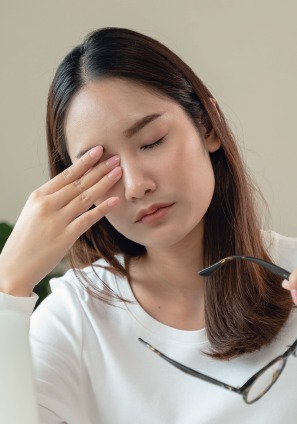Dry eyes, a common eye condition, occur when the eyes do not produce enough tears or when the tears evaporate too quickly. Tears play a crucial role in maintaining eye health and providing comfort. When the tear film is disrupted, it can lead to discomfort, irritation, and a range of symptoms.
Outlook
Dry eyes can be uncomfortable condition caused by various factors, including aging, environmental conditions, and medical issues. Recognizing the causes, symptoms, and available management options is crucial for individuals experiencing dry eyes. With appropriate treatment and lifestyle modifications, many people can find relief from dry eye symptoms and improve their overall eye comfort. If you suspect you have dry eyes or are experiencing persistent symptoms, it’s essential to consult with a healthcare provider or eye specialist for a proper evaluation and personalized treatment plan.
Causes of Dry Eyes
Several factors can contribute to the development of dry eyes:
- - Aging: The natural aging process can lead to a decrease in tear production and quality.
- - Environmental Factors: Exposure to dry or windy climates, air conditioning, heating, and smoke can increase the likelihood of developing dry eyes.
- - Screen Time: Prolonged use of digital screens, such as computers and smartphones, can reduce the frequency of blinking and lead to evaporation of tears.
- - Medical Conditions: Certain medical conditions, including autoimmune diseases (such as Sjögren’s syndrome), diabetes, thyroid disorders, and rheumatoid arthritis, can be associated with dry eyes.
- - Medications: Some medications, including antihistamines, decongestants, birth control pills, and certain antidepressants, can decrease tear production.
- - Eyelid Problems: Conditions that affect the structure or function of the eyelids, such as blepharitis (inflammation of the eyelids), can disrupt the distribution of tears.
Symptoms of Dry Eyes
The symptoms of dry eyes can vary in severity and may include:
- - Stinging or Burning Sensation: Many people with dry eyes experience a persistent stinging or burning sensation in their eyes.
- - Redness: The eyes may appear red or bloodshot due to irritation.
- - Itchiness: Dry eyes can cause itching and discomfort.
- - Watery Eyes: Paradoxically, some individuals with dry eyes may experience excessive tearing as the eyes attempt to compensate for the lack of adequate moisture.
- - Sensitivity to Light: Photophobia, or sensitivity to light, can be a symptom of dry eyes.
- - Blurry Vision: Vision may become temporarily blurred, particularly when reading or using digital screens.
- - Feeling of Foreign Body: Some people describe the sensation of having a foreign object, like sand or grit, in their eyes.
- - Difficulty Wearing Contact Lenses: Dry eyes can make it challenging to wear contact lenses comfortably.
Management and Treatment of Dry Eyes
The management of dry eyes typically involves a combination of lifestyle changes, home remedies, and medical treatments:
- - Artificial Tears: Over-the-counter artificial tear drops can provide temporary relief by supplementing the natural tear film. There are various formulations available, so it’s essential to choose the one that suits your specific needs.
- - Prescription Medications: For more severe cases of dry eyes, a healthcare provider may prescribe medicated eye drops, such as cyclosporine (Restasis) or lifitegrast (Xiidra), to reduce inflammation and increase tear production.
- - Warm Compresses and Lid Hygiene: For individuals with blepharitis or meibomian gland dysfunction, warm compresses and eyelid hygiene can help improve tear quality and flow.
- - Environmental Modifications: Making changes to your environment, such as using a humidifier, avoiding direct airflow from heating or air conditioning vents, and taking regular breaks from screen time, can reduce eye dryness.
- - Omega-3 Fatty Acids: Some studies suggest that omega-3 supplements, such as fish oil, may help improve tear quality and reduce dry eye symptoms.
- - Punctal Plugs: In cases where conservative treatments are ineffective, small plugs may be inserted into the tear ducts to block drainage and prolong tears on the eye’s surface.
- - Lifestyle Changes: Staying well-hydrated, maintaining a balanced diet, and avoiding excessive caffeine and alcohol intake can contribute to overall eye health.
- - Blinking Exercises: Practicing mindful blinking, taking breaks, and consciously blinking more often can help maintain the tear film.
- - Consultation with an Eye Specialist: In cases of severe or persistent dry eyes, it’s crucial to consult with an eye specialist, such as an ophthalmologist or optometrist, who can recommend advanced treatments or procedures.
